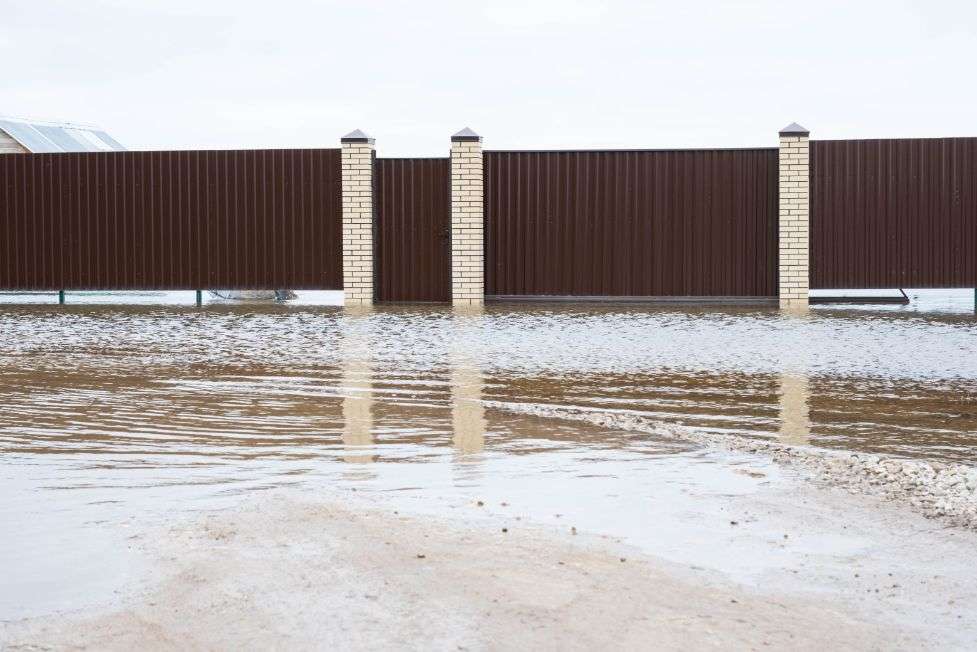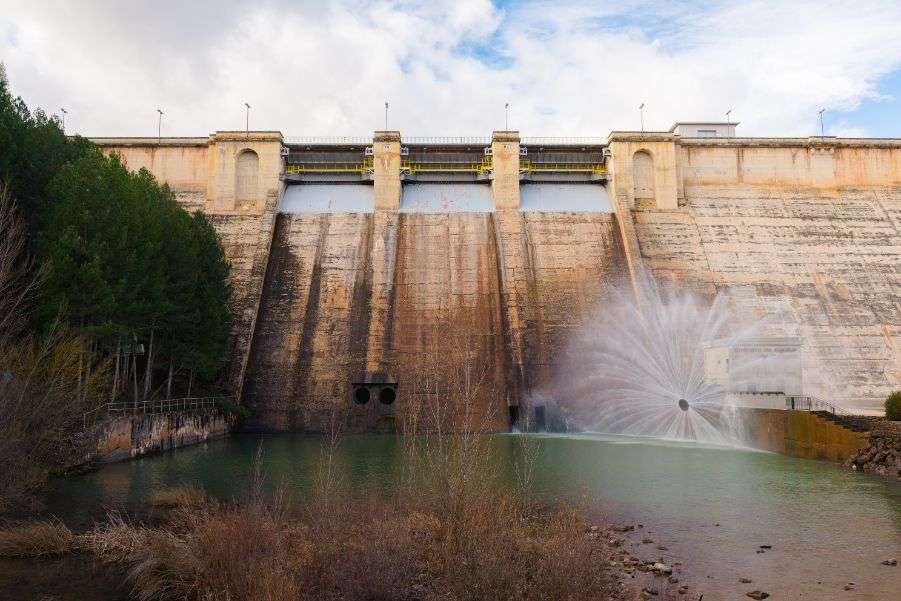In a world driven by innovation and sustainability, how do hydroelectric power plants contribute to modern society? Hydroelectric power plants play a vital role in modern society by generating clean and renewable energy. It harnesses the power of flowing water. This sustainable energy source significantly reduces carbon emissions, ensuring a reliable and stable energy supply. Beyond electricity generation, hydroelectric facilities contribute to water resource management, job creation, economic development, and technological innovation. Driving the global transition to a greener and more sustainable energy landscape, it also provides essential grid stability and supports various aspects of local and global infrastructure. Here’s how hydroelectric power plants contribute:
- The Promise of Renewable Energy
- Reduced Dependence on Fossil Fuels
- Dependable Backup Power
- Contribution to Flood Control
- Role in Irrigation Support
- Ensuring Reliable Water Supply
- Economic Dynamics
The Promise of Renewable Energy

In the grand theater of renewable energy, hydroelectric power takes center stage as a true showstopper. With a cast of flowing rivers and intricate turbines, this production promises an electrifying performance that leaves us all in awe.
A Clean Energy Revolution
Renewable energy, such as hydroelectric power plants, brings a revolution in how we produce electricity. Unlike fossil fuels that release harmful gases into the air when burned, hydroelectric power generates energy without pollution. This clean energy approach supports our efforts to reduce air pollution and combat climate change, which are crucial steps for a healthier and more sustainable planet.
Reliable Energy for Modern Needs
In today’s technology-driven world, a consistent energy supply is essential. Hydroelectric power plants provide a dependable source of electricity. Rivers, which fuel hydroelectricity, flow reliably year-round. This stability helps us meet the energy demands of homes, industries, and cities without worrying about sudden disruptions.
Balancing Environmental and Development Needs
Hydroelectric power plants are a prime example of how we can balance the needs of development with environmental conservation. While these plants harness the energy of flowing water, they also consider the ecological health of rivers and aquatic life. Modern hydroelectric designs incorporate safeguards to minimize environmental impact.
Inspiring Innovation for Tomorrow
Investing in renewable energy stimulates innovation. Researchers and engineers continually work to improve hydroelectric technology, making it more efficient and environmentally friendly. These innovations ripple across the energy sector, encouraging advancements in other clean energy sources as well.
A Path to Sustainable Living
Renewable energy, led by hydroelectric power, paves a path toward sustainable living. It demonstrates our ability to embrace modern comforts while respecting the Earth’s resources. As we integrate renewable energy into our lives, we lay the foundation for a future where energy demand is met without compromising the well-being of our planet. In a world where environmental consciousness and energy security are paramount, the promise of renewable energy, particularly through hydroelectric power, brings hope for a better and more sustainable future. By embracing clean, reliable, and locally sourced energy, we are shaping a modern society that thrives while caring for the world we call home.
Reduced Dependence on Fossil Fuels

In the realm of energy options, hydroelectric power emerges as a knight in shining armor, armed with a dual-edged sword: it’s both clean and cost-effective. Picture a majestic river winding through modern society, glistening in the sunlight, while silently powering the gears of progress.
Reducing Pollution
Non-renewable energy sources like coal and oil-based fuels release pollutants into the air when burned. These pollutants contribute to smog, respiratory issues, and a host of health problems. By moving towards renewable sources like hydroelectric power, we’re choosing cleaner energy that doesn’t emit harmful gases or compromise air quality.
Lowering Emissions
Burning fossil fuels releases greenhouse gases, such as carbon dioxide, into the atmosphere. These gases trap heat, leading to global warming and climate change. Transitioning to renewable energy helps curb these emissions, as sources like hydroelectric power generate electricity without releasing significant greenhouse gases.
Minimizing Environmental Harm
The extraction and processing of fossil fuels often result in habitat destruction and water pollution. By embracing renewable energy, we reduce our footprint on delicate ecosystems. Hydroelectric power, for example, harnesses the power of flowing water without causing the habitat disruption linked to fossil fuel extraction.
Enhancing Energy Security
Dependence on non-renewable energy can tie a nation’s energy security to imports and price fluctuations. Shifting to renewable energy sources like hydroelectric power empowers us to generate energy locally, reducing vulnerability to global supply disruptions and geopolitical tensions.
Driving Progress
Reducing reliance on fossil fuels drives innovation in renewable technologies. This innovation extends beyond energy production, influencing transportation, materials, and everyday technologies. Choosing renewable energy sources like hydroelectric power encourages the development of new solutions that benefit modern society. This choice reflects our commitment to creating a modern society that values the well-being of both its inhabitants and the Earth.
Dependable Backup Power

In the realm of energy, where uncertainty lurks and power outages loom like villains, hydroelectric power plants emerge as the valiant heroes of backup power. Their unwavering reliability and adaptability make them the caped crusaders we can always count on.
Swift Response to Surges
Energy demand isn’t always constant. During peak hours, extreme weather conditions, or events that lead to increased electricity usage, the power demand can surge significantly. Hydroelectric power plants excel in such scenarios, as they can swiftly and effectively generate extra electricity to meet these heightened demands. Their responsive nature ensures that spikes in demand are met without disruption, providing a seamless energy flow even during unexpected surges.
Rapid Activation with Minimal Delay
Imagine a scenario where a sudden power outage plunges an area into darkness. Hydroelectric power plants stand poised as vigilant sentinels, primed to respond to such emergencies. Their turbines can be swiftly activated, converting the kinetic energy of flowing water into electrical power almost instantly. This seamless response minimizes downtime and ensures a swift restoration of power, enhancing the resilience of our energy systems.
Bridging the Renewable Gap
While renewable energy sources like solar and wind contribute significantly to our sustainable energy mix, they are subject to the inherent variability of weather conditions. Hydroelectric power plays a pivotal role in shoring up these renewables by seamlessly filling the gaps left by the intermittent nature of solar panels or wind turbines. Its consistent energy generation acts as a reliable anchor, ensuring an uninterrupted and dependable energy supply regardless of weather fluctuations.
Urban Centers and Industries
The heartbeat of our modern world resides in urban centers and industries, where continuous power is not a luxury but a necessity. Hydroelectric power plants offer essential support to these hubs by acting as a steadfast energy backbone. They provide the energy required to keep cities illuminated, factories operational, and critical services functioning, ensuring that essential aspects of modern life remain undisturbed.
Assurance Against Disruptions
In an era where even momentary disruptions can send ripples through industries, economies, and our daily lives, the dependability of our energy sources takes on paramount importance. Hydroelectric power plants embody this modern assurance against energy disruptions. They stand resolutely as reliable safeguards, poised to supply power when conventional sources face challenges. Their readiness ensures the smooth functioning of our interconnected world, allowing us to maintain productivity, communication, and essential services without interruption. Amidst the uncertainties of the modern age, hydroelectric power stands as a steadfast pillar of stability, supporting the continuity of our dynamic and interdependent society.
Contribution to Flood Control

Hydroelectric power plants emerge not only as generators of clean energy but also as formidable allies in the realm of flood control. In a world where climate change and urbanization have intensified the impacts of flooding, these power plants have taken on a crucial role in shaping modern flood management strategies.
Strategic Water Regulation
Rivers, governed by the caprices of weather, can transform from gentle streams to raging torrents in a matter of hours. Hydroelectric power plants strategically regulate these natural flows. Through intelligent adjustments in the release of water from reservoirs, they can modulate downstream flow, preventing sudden surges that could result in disastrous floods. This capability has evolved hydroelectric power plants from mere energy producers to vital components of flood preparedness.
Buffering with Reservoirs
Many hydroelectric facilities incorporate reservoirs capable of storing surplus water during periods of heavy rainfall. These reservoirs act as natural buffers, absorbing excessive flows and reducing the risk of downstream flooding. By offering temporary storage, they mitigate the impact of sudden rainfall events, giving floodwaters a controlled outlet when conditions stabilize.
Balancing the Equation
During intense rainstorms, water rushes downstream with potentially catastrophic force. Hydroelectric power plants ease this pressure by intelligently managing water levels upstream. By controlling the release of water, they maintain a steady flow downstream, mitigating the chances of sudden flooding and providing communities with valuable time to prepare and respond.
Lifeline in Crisis
In the throes of a flooding crisis, hydroelectric power plants unveil their resilience. With adaptive technology and informed decision-making, these plants become lifelines for communities facing imminent flooding. By judiciously managing water levels, they provide relief, channeling excess water away from vulnerable areas and thereby diminishing the severity of flooding impacts.
Modern Flood Management
As societies grapple with the evolving challenges of climate change and urban expansion, modern flood management requires dynamic solutions. Hydroelectric power plants emerge as integral components of this strategy. Their ability to predict, manage, and mitigate flood risks ushers in a new era of flood control. In collaboration with advanced technology, they empower communities with timely warnings, efficient water release mechanisms, and data-driven insights, ensuring that our modern world remains resilient in the face of nature’s unpredictable forces.
Role in Irrigation Support

Water Allocation
Hydroelectric power plants master the art of water management. They control the flow of rivers by adjusting dam releases, creating a seamless synergy between energy generation and water distribution. This mastery becomes a lifeline for agricultural endeavors, as water allocation can be optimized for irrigation during critical growth phases of crops. In regions where water scarcity threatens agriculture, hydroelectric power plants present a dual solution. They generate power from the flow of water while simultaneously storing water in reservoirs. This stored water becomes a valuable asset for irrigation, particularly during dry spells.
Responsive to Agriculture
Hydroelectric power plants offer flexibility in water release, aligning with the rhythm of agricultural cycles. During planting and growth periods, water can be allocated generously to nurture crops. As harvest time approaches, releases can be adjusted, conserving water resources. This adaptable approach ensures that water is available when and where it’s needed the most. Hydroelectric power plants also exhibit a harmonious synergy between energy and agriculture. As these plants produce energy, surplus water from power generation can be channeled for irrigation, optimizing resource utilization. This coexistence reflects a sustainable model where energy production and agricultural advancement go hand in hand.
Rural Livelihoods
In many regions, agriculture is the backbone of rural economies. Hydroelectric power plants invigorate these communities by not only generating jobs but also supplying water for irrigation. This dual contribution enhances agricultural productivity, secures livelihoods, and fosters sustainable growth in rural areas. When rains are scarce, these plants step in to provide the necessary water for crops, ensuring that agriculture remains viable even in challenging conditions. As agriculture continues to be the bedrock of societies, the irrigation support provided by hydroelectric power plants remains an essential pillar of growth, nourishing both fields and the lives they sustain.
Ensuring Reliable Water Supply

Water Security
In the realm of water resources, hydroelectric power plants take on a dual role that enhances water security. They skillfully manage river flows to maintain consistent water levels downstream, offering reliability to communities and ecosystems. Additionally, these plants create resilient water reserves through strategic dam releases and reservoir management. During periods of excess rainfall, water is stored, serving as a buffer against dry spells. This multifaceted approach—balancing steady management and resilient reserves—ensures a stable water supply, making hydroelectric power plants essential guardians of water security in an ever-changing world.
Water Scarcity
Water scarcity is a growing concern globally. Hydroelectric power plants become part of the solution by supplying water for diverse needs. From household consumption to industrial processes, these plants ensure that vital water resources are available even in regions prone to water stress. In times of natural disasters or emergencies, hydroelectric power plants also exhibit their resilience. By efficiently managing water resources, they can ensure that vital water supplies are available for disaster response and recovery efforts, even when traditional supply systems are compromised.
Aquatic Ecosystems
Healthy aquatic ecosystems hinge on the availability of water. Hydroelectric power plants contribute to ecosystem sustainability by regulating water flows. This moderation prevents extreme fluctuations that could disrupt habitats and aquatic life, supporting the delicate balance of these ecosystems. Moreover, the controlled water releases enable aquatic ecosystems to adapt and flourish, even in the face of varying external conditions. Hydroelectric power plants, therefore, stand as guardians of aquatic life, fostering a harmonious coexistence between human energy needs and the vibrant underwater worlds that thrive within our rivers and lakes.
Hydropower in Dryland Regions
For regions grappling with arid conditions, the role of hydroelectric power plants becomes even more crucial. These power plants serve not only as generators of clean energy but also as lifelines for maintaining water availability. By harnessing the energy of flowing water, they ensure a steady supply for drinking, irrigation, and essential needs. In regions where water resources are limited, hydroelectric facilities play a transformative role by providing a dependable source that supports agriculture, sustains livelihoods, and lessens the impact of harsh dry conditions. In these areas, where water is often scarce, hydroelectric power plants shine as beacons of hope. Their influence goes beyond energy generation; they play a pivotal role in ensuring the survival and growth of communities, promoting resilience, and offering a glimmer of optimism in the face of challenging arid environments.
Economic Dynamics

Job Creation
The role of hydroelectric power plants extends beyond the energy grid. They generate a surge of employment opportunities, from skilled engineers and technicians who design and manage the plants to administrative personnel who oversee operations. This influx of jobs not only addresses unemployment concerns but also breathes vitality into local economies. Communities surrounding these plants experience a ripple effect as livelihoods are secured, and increased disposable income fosters growth in various sectors.
Infrastructure Development
Hydroelectric power plants necessitate the establishment of robust infrastructure. From constructing dams and reservoirs to laying transmission lines, these projects invigorate construction and engineering industries. The resulting ripple of economic activity extends to suppliers, subcontractors, and local businesses. The creation of essential infrastructure contributes to the overall development of regions, attracting investments, businesses, and inhabitants.
Export and Trade
The surplus energy generated by hydroelectric power plants finds its way across borders as energy exports. These exports not only enhance a nation’s energy security but also foster economic partnerships through cross-border energy trade. The revenue generated from energy exports bolsters trade balances and serves as a conduit for strengthening diplomatic and economic relations between nations.
Recreational Opportunities
The reservoirs formed by hydroelectric power plants create unexpected opportunities for recreation and tourism. These areas become magnets for outdoor enthusiasts seeking activities like boating, fishing, and leisure. The influx of tourists generates revenue for local businesses, hospitality services, and cultural attractions. This fusion of industry and leisure transforms regions into vibrant economic hubs, supporting businesses that cater to both local residents and visitors.
Investment Magnet
Hydroelectric power projects, with their long-term stability and potential for sustainable returns, attract investments from both private entities and public institutions. The infusion of investment capital catalyzes economic growth. Beyond the immediate impact on the energy sector, investment in hydroelectric power plants stimulates research and development, innovation, and the growth of auxiliary industries, creating a thriving ecosystem of economic activities. These plants lay the foundation for resilient and thriving modern societies, ensuring that progress is not only powered by energy but also fueled by the pursuit of prosperity.
In our modern journey, hydroelectric power plants are like essential threads woven into the fabric of progress. They do more than just create energy. They protect water, help control floods, and support nature. These plants also boost economies by creating jobs, building things, trading energy, creating fun spaces, and attracting investments. They’re like a song of growth, making sure our future is bright with both clean energy and economic success. These plants connect our energy needs with our hopes for a prosperous future, showing that nature and progress can go hand in hand. If you’re inspired by the potential of these plants to shape a sustainable future and want to delve deeper into the realm of clean energy solutions, we invite you to take the next step. Intrigued to learn more? Discover further insights into our recommended products in propelling the journey towards a greener, more resilient world.

